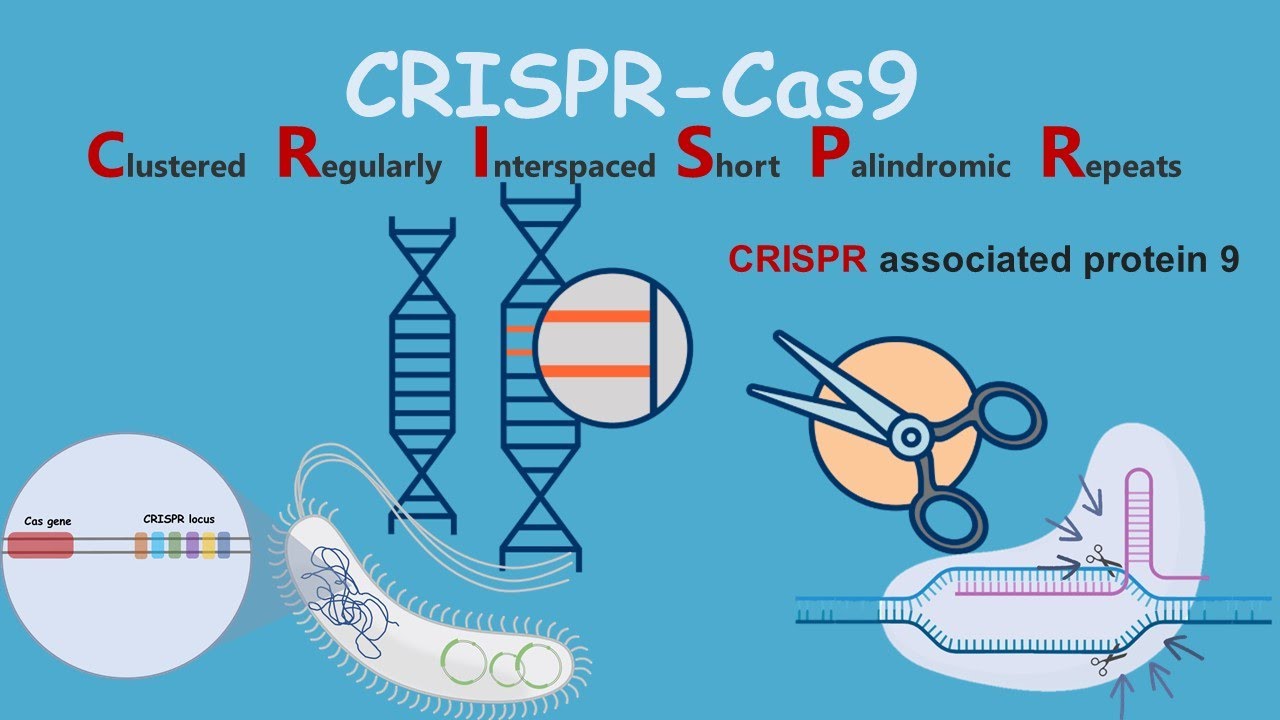Gene editing gives scientists the ability to change an organism’s DNA, allowing them to treat or prevent diseases. Technologies like CRISPR-Cas9 allow genetic material to be added, removed, or altered at particular locations in a gene, which is exciting news for researchers. The technology is faster, cheaper, effective, and more accurate than other methods presented in the past.
CRISPR-Cas9, which is short for Clustered Regularly Interspaced Short Palindromic Repeats and CRISPR-Associated Protein 9, was created from a naturally occurring gene editing system that bacteria use in our body to defend us against viruses. When infected with a virus, Cas proteins in a bacteria capture small pieces of the invading virus’s DNA and insert them into their own DNA in a particular pattern. They are copied into short pieces of RNA and allow the bacteria to remember the virus. The RNA binds to a special protein called Cas9. If the viruses attack again, the bacteria produce RNA segments that recognize the virus’s DNA. The bacteria then use Cas9 or a similar enzyme to cut the DNA apart, which destroys the virus.
Several bacteria, including E. coli and Halophiles, use CRISPR as a defense mechanism. In 2012, scientists found out how to use CRISPR to target DNA in almost any organism. In the lab, scientists design a model RNA to match the gene they want to edit, and attach it to the Cas9 protein. The model RNA guides Cas9 to the gene they want to edit, and the protein is able to destroy the gene and replace the DNA with the RNA. Using this technique, scientists are able to make changes to genetic code.
Although the technology yields promising results and sounds like a perfect option for gene editing, many questions about the ethics of these procedures have been raised. Researchers and bioethicists believe that it shouldn’t be used for reproductive purposes yet.
CRISPR-Cas9 has been a major breakthrough in the world of medicine because of its potential to solve problems we couldn’t think of before. Although research is ongoing, one thing is clear: this new technology could carve the way for healthier generations while providing solutions for genetic disorders.
Wednesday, May 8, 2024
Youth Are Awesome, commonly referred to as YAA, is a blog written by youth for youth. YAA provides the youth of Calgary a place to amplify their voices and perspectives on what is happening around them. Youth Are Awesome is a program of Youth Central.
Any views or opinions expressed on this blog belong solely to the author and do not represent those of people or organizations that the blog may be associated with, unless explicitly stated. All content is for informational purposes only.
RELATED ARTICLES


